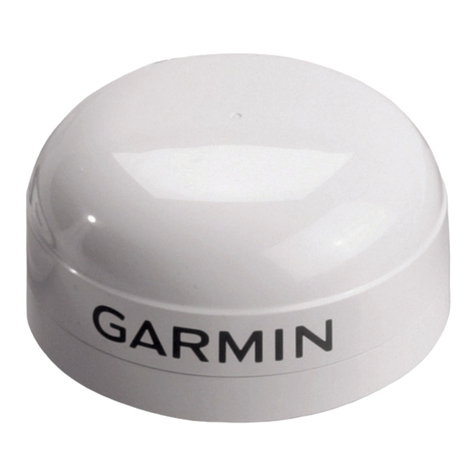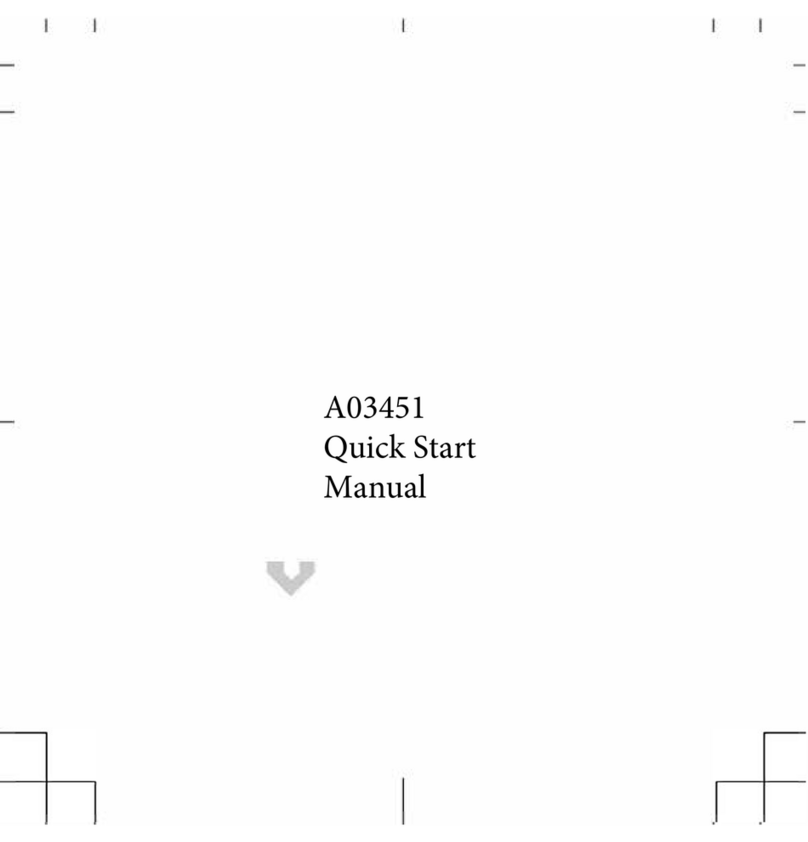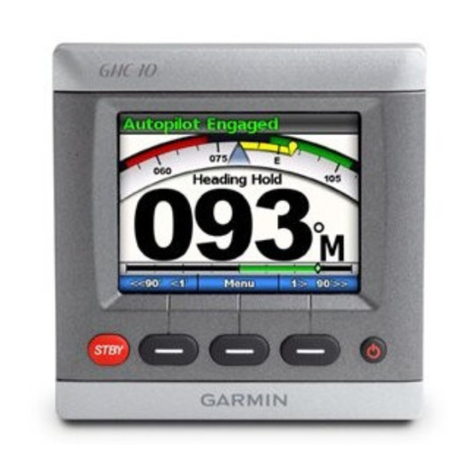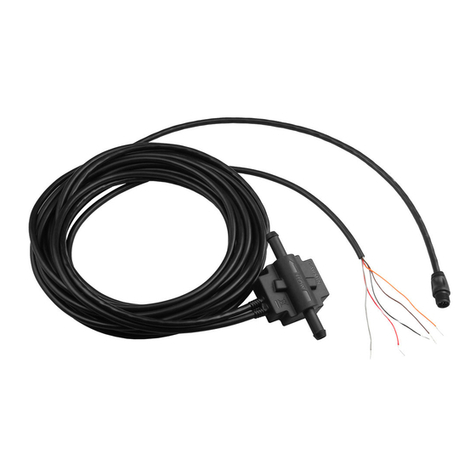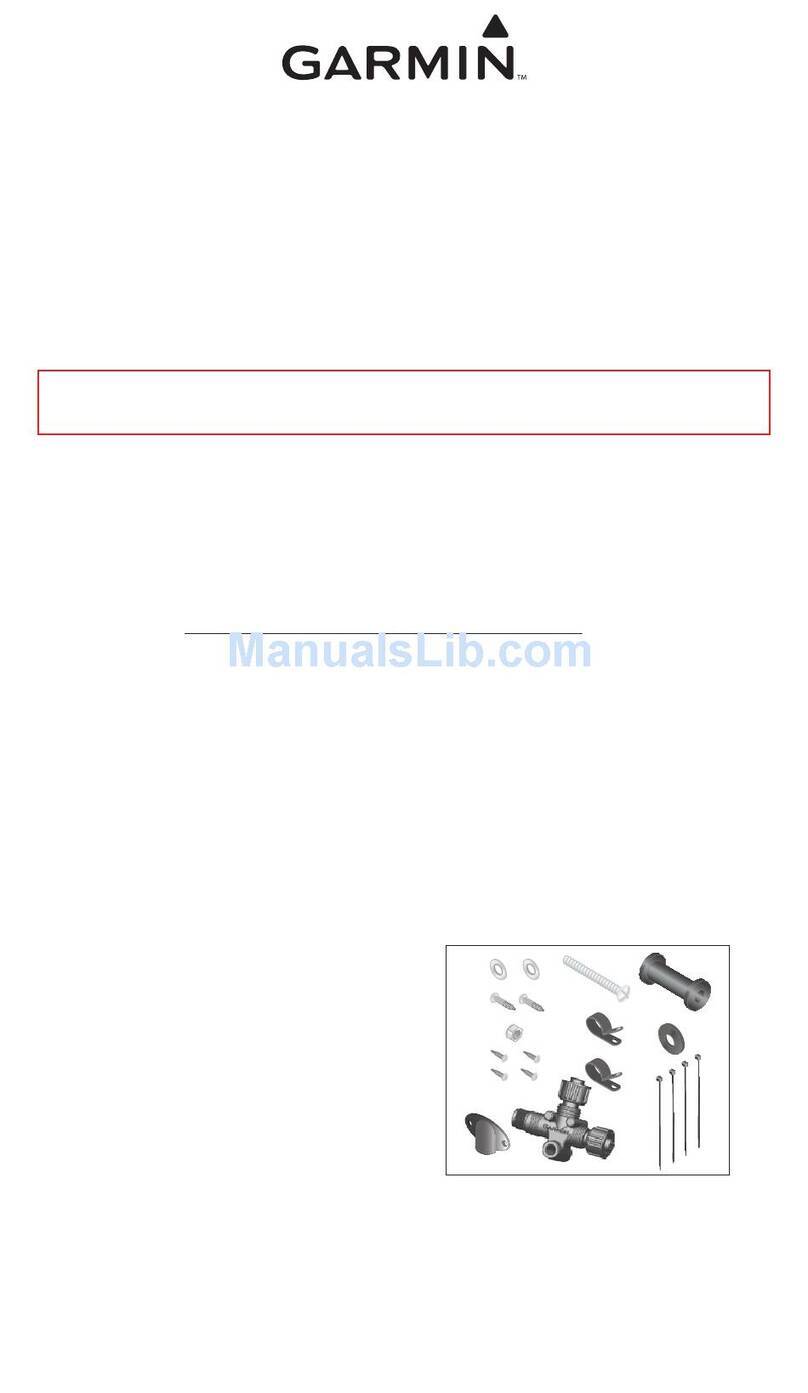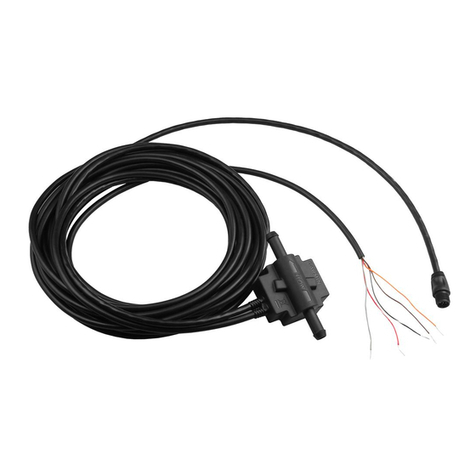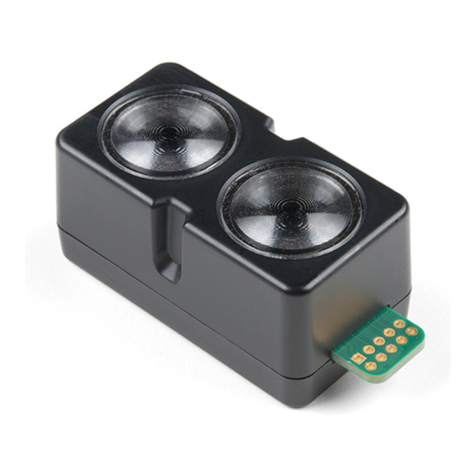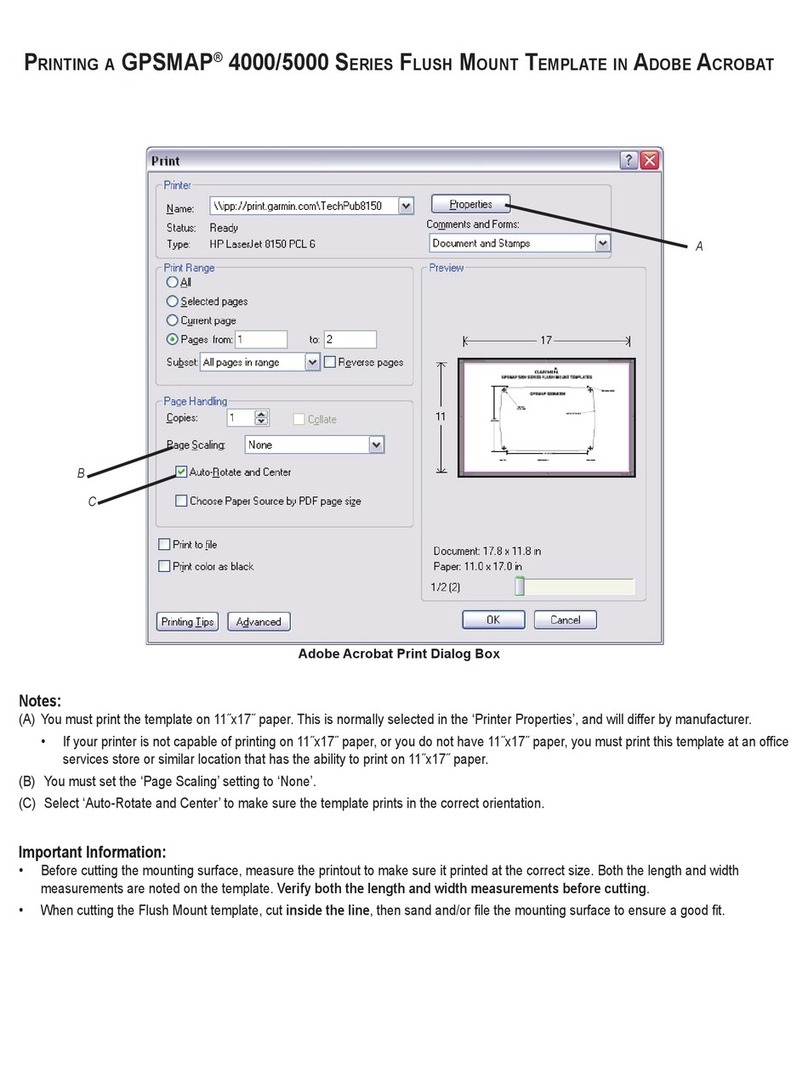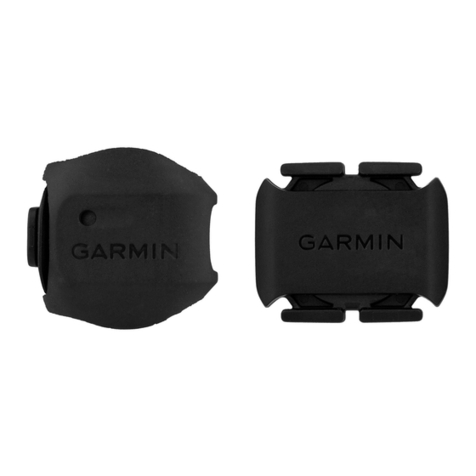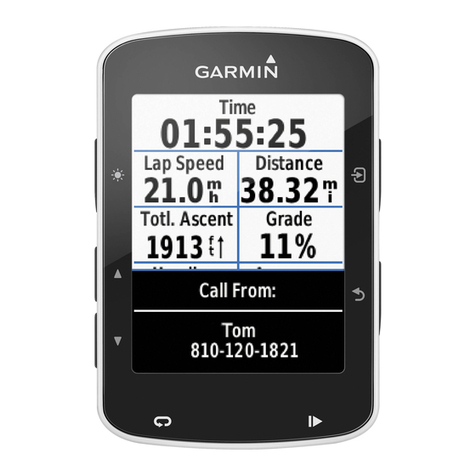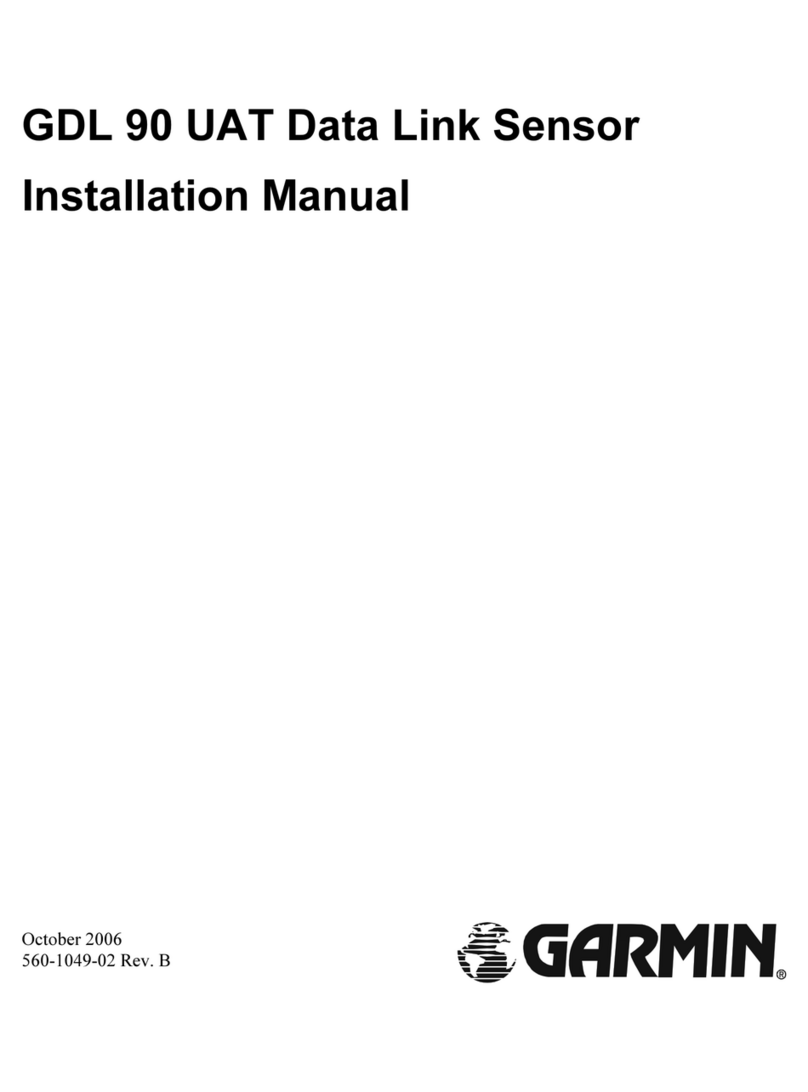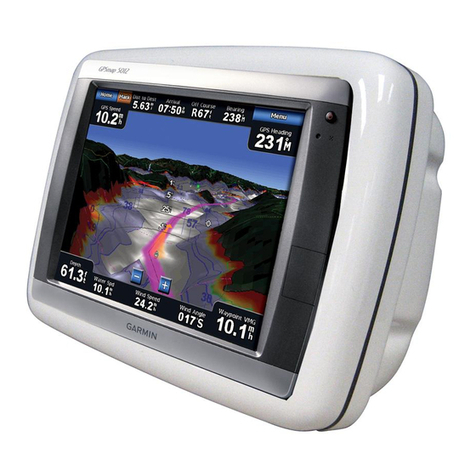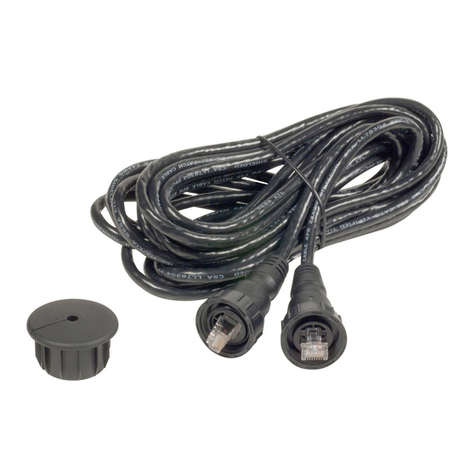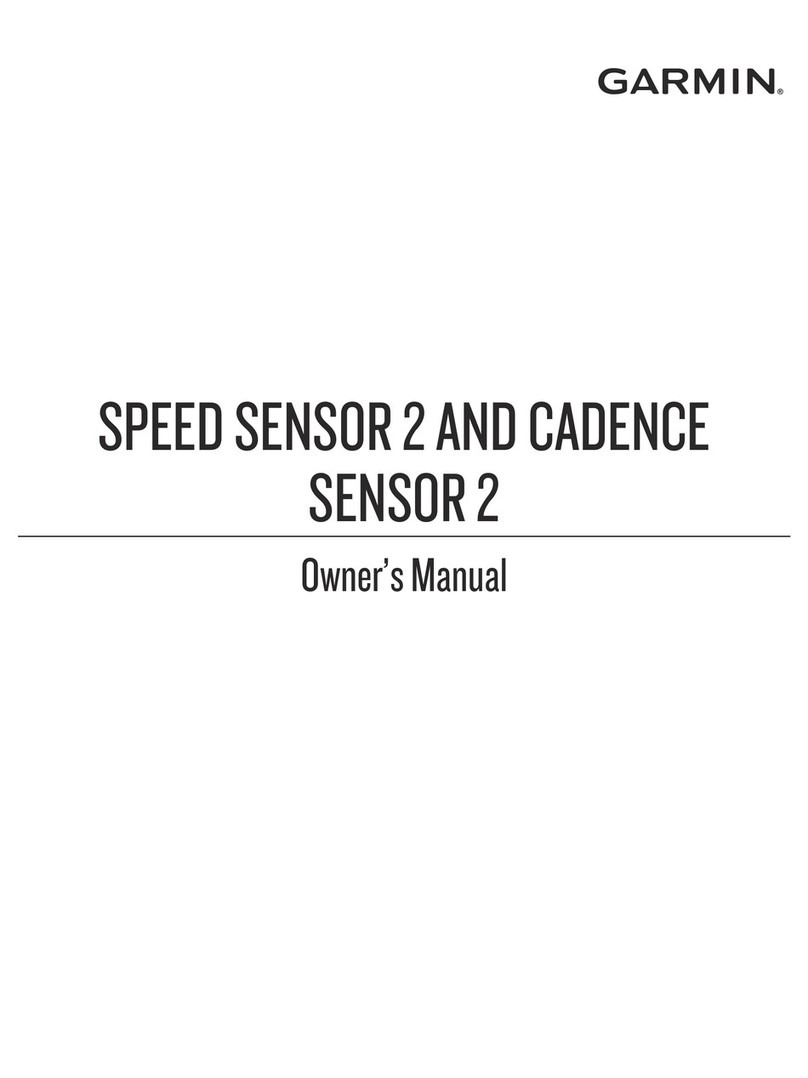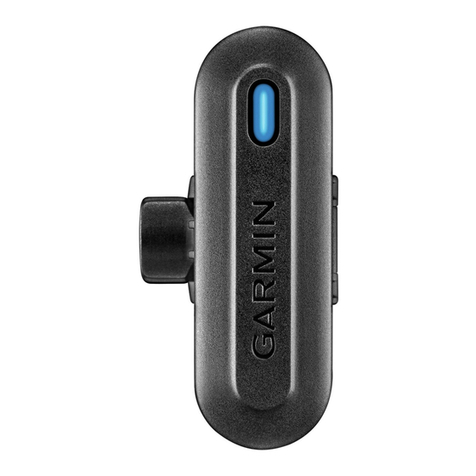
2Place the sensor in the chosen mounting location, and mark
the center of the three mounting holes.
3Place the tiller-arm mount on the tiller arm in the chosen
location, and mark the center of the two mounting holes.
4Using a 1/8 in. (3.2 mm) bit, drill three pilot holes on the
mounting surface for the sensor, and two pilot holes on the
tiller arm for the tiller-arm mount.
5Fasten one of the ball-joint assemblies to the tiller-arm
mount, using the included M6 locknut.
6Place the other ball-joint assembly into the appropriate hole
on the sensor (typically the second hole from the tip), and
fasten it with the included washer and locknut, using a 10
mm socket.
7Tighten the ball-joint assemblies using a 8 mm wrench at the
base.
8Fasten the sensor to the mounting surface using the included
screws.
9With the rudder amidships and the sensor at center position,
measure the distance from the ball-joint assembly on the
sensor to the location where you plan to attach the tiller-arm
mount to the tiller arm.
10If the threaded rod is too long, you must cut it to the correct
length (page 3).
11Thread both of the standard M6 nuts onto the threaded rod.
12Thread the rod into the ball-joint assembly connected to the
sensor.
13Thread the other end of the rod into the ball-joint assembly
connected to the tiller-arm mount.
14Fasten the tiller-arm mount to the tiller using the included
screws.
15Tighten the M6 nuts on the threaded rod against both of the
ball-joint assemblies.
Cutting the Threaded Rod
If the included threaded rod is too long for your chosen
installation location, you must cut it.
1Thread one of the included standard M6 nuts onto the
threaded rod.
Do not use one of the included M6 locknuts.
2Measure and mark the threaded rod with electrical tape.
3Using the appropriate saw, cut the threaded rod at the
marked location.
4Remove the nut from the threaded rod, turning it counter-
clockwise over the cut area.
The nut should straighten any threads that may have been
damaged while cutting the rod.
Connecting the Device to the Autopilot System
1Route the cable from the sensor to the orange 12-pin
connector on the ECU of the autopilot system.
The installation instructions provided with your autopilot
system will help you identify where this connector is located.
If needed, extension cables are available.
2Connect the sensor to the autopilot system.
Configuring the Sensor
When connected to a Garmin autopilot system, the sensor
is configured using the autopilot helm control.
NOTE: If an error appears during these steps, the sensor may
have reached the limit of its movement range. Make sure the
sensor was installed correctly. If the problem persists, bypass
this error by moving the rudder to the farthest position that does
not report an error.
1Enter Dealer Mode by following the procedures in your
autopilot installation instructions.
2From the Heading screen, select Menu > Setup > Dealer
Autopilot Configuration > Steering System Setup >
Rudder Sensor Setup.
3Position the rudder so that the boat would steer fully
starboard, and select OK.
4After the starboard calibration is complete, position the
rudder so that the boat would steer fully port, and select OK.
5After the port calibration is complete, center the rudder
position, let go, and select Begin.
The autopilot takes control of the rudder.
6Wait while the autopilot calibrates the rudder.
7Select an option:
• If the calibration completes successfully, select OK.
• If the calibration did not complete successfully, repeat
steps 2–6.
Appendix
Specifications
Specification Measurement
Dimensions (H×W×D) 215/64 × 2¾ × 717/32 in. (60.8 × 70 × 191.4
mm)
Weight 5.54 oz. (157 g)
Temperature range From 5°F to 158°F (from -15°C to 70°C)
Material Polyoxymethylene (POM), waterproof to IEC
60529 IPX7 standards
Cable length 6½ ft. (2 m)
Max cable extension 49 ft. (15 m)
Up to three 16 ft. 4 in. (5 m) extensions
Nominal input voltage 4.5–5.5 Vdc
Compass-safe
distance
3.2 ft. (1 m)
Registering Your Device
Help us better support you by completing our online registration
today.
• Go to garnin.
• Keep the original sales receipt, or a photocopy, in a safe
place.
Shop for other marine electronics & navigation on our website.

